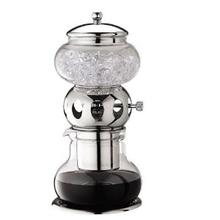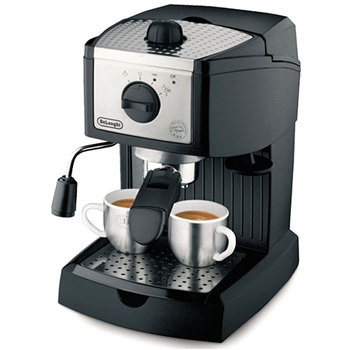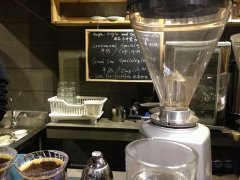What is the spread of dripping coffee the characteristics of dripping coffee Dutch coffee
Dripping coffee, also known as Dutch coffee, originated in Europe. The dripping pot for brewing was invented by an archbishop in Paris. It uses cold water or ice water to extract, through natural osmotic water pressure, adjust the speed of water droplets, extract at 5 ℃ for 4 to 10 hours and leak for a long time, so that the original flavor of coffee can be naturally reproduced by fax.
The characteristics of dripping coffee
Dutch coffee drip filter pot originated in the Netherlands, is the best choice for making iced coffee. The most special thing about waterdrop coffee is that cold water is completely used in the process of coffee extraction. General production will let cold water deep baking at the rate of 7 drops in 10 seconds, fine grinding of coffee powder, let coffee slowly extract through cold water. Drink directly or add ice.
The advantage of water drop coffee is not sour and does not hurt the stomach, because using this method to make coffee, most of the coffee beans selected are deep-roasted coffee beans such as Mantlin, because of "shallow roasting but sour, deep roasting bitter but strong". Water drop coffee is another reason why deep-roasted coffee beans are not sour and deep-roasted coffee beans can be diluted with ice after being made, so deep-roasted beans must be selected to filter so as not to be strong enough. The reason why the taste of waterdrop coffee is not astringent is because of the use of cold water. Other coffee brewing methods often use hot water, while hot water with too high temperature will break down some chemicals in the coffee and release astringency, while the dripping coffee is completely filtered with cold water, and the coffee is 100% soaked and wet. the extracted coffee tastes smooth but not sour. Another key to the success or failure of dripping coffee is the dripping speed. With a slow dripping speed of 10 seconds and seven drops, water and coffee powder will be mixed for a long time, so the coffee taste is more saturated. If the dripping time is too fast, the taste is too light. At the same time, it will produce stagnant water spill. On the contrary, too slow will make the coffee ferment, produce sour taste and wine taste.
The spread of dripping coffee
Although the cultivation of coffee originated in Ethiopia, it has not been artificially cultivated and cultivated on a large scale in the place of origin. It is the Arabs who really make the coffee artificially planted and cultivated.
In the Arab region, especially in Yemen, there is evidence that coffee cultivation appeared in the fifteenth century. In fact, coffee may have been planted earlier in this region. But conservative Arabs themselves imported coffee seeds from other countries, but after the start of large-scale artificial cultivation, they expected to monopolize this wonderful and attractive crop and regard it as their patent. The Arabs cunningly insisted on banning the export of coffee seeds and even made strict laws to this end.
In the 16th and 17th century, the Netherlands was the most powerful colonial country in the world. Their huge merchant ships and warships sailed on many important shipping routes in the world, not only expanding their territory to the outside world, but also conducting large-scale trade activities. Coffee is also extremely tempting to the Dutch. The Dutch East India Company was the largest colonial trading company in the world at that time. In the process of coffee trade, they found that coffee brought high profits, so they envisioned being able to form their own coffee production base to maximize profits in coffee trade.
The Dutch tried countless times to persuade the Arab princes to agree to export coffee seedlings or seeds to them so that their country could fundamentally obtain this fascinating and strange drink, but all efforts were defeated by the Arab refusal. The reluctant Dutch did not give up their illusions. after careful arrangements, in 1616, coffee seedlings and seeds were secretly transported out of the heavily guarded port of Mocha and back to the Netherlands.
After the Dutch shipped coffee seedlings and seeds home, they began to cultivate and grow coffee trees in greenhouses that mimic the Arab environment, temperature and humidity, and eventually succeeded.
With the colonization going on, the Dutch brought coffee to the world. The Dutch overseas colonies once became a major supplier to Europe.
As a big coffee trading country, the Netherlands naturally does not have all kinds of conflicts caused by coffee. Drinking coffee at home began at the turn of the 16th century. Until the opening of the first coffee shop in the mid-1660s, almost "no family did not drink coffee in the morning." Not only the upper-middle class, but also their servants can taste coffee.
These coffee houses all have their own unique style. In particular, the black inlaid walls and shiny copper cry to warm the atmosphere. Many coffee houses set up financial circles, where businessmen and managers often gather to talk business.
In some Dutch cities, coffee houses are set up in beautiful gardens. Here, guests can enjoy coffee in the shade of trees and enjoy the beautiful scenery. This garden coffee shop is especially popular in spring. The whole garden is full of flowers and tulips.

Important Notice :
前街咖啡 FrontStreet Coffee has moved to new addredd:
FrontStreet Coffee Address: 315,Donghua East Road,GuangZhou
Tel:020 38364473
- Prev

How to use Coffee Machine American Coffee Machine handling of Common problems in American Coffee Machine
1. Coffee is too light: the ratio of water to coffee powder is not right, so just increase the amount of coffee powder. The Min scale of the glass coffee pot below is 2 cups and requires 4-6 tablespoons of coffee powder. Coffee temperature is too low: American coffee machine due to the principle, in the process of coffee extraction will lose a large part of the heat, so the coffee temperature is not high, can not add coffee powder first
- Next

China Coffee net Coffee Grinding Machine Common sense Grinding Machine selection and purchase suggestions on what is worth buying
The importance of the bean grinder: the bean grinder is often directly ignored in coffee recruits! This is a really sad fact! Many novices buy coffee powder directly in the supermarket. But friends with a little common sense will know that the shelf life of coffee after roasting is very short. It is generally recommended that freshly baked beans should be drunk within 1 month! Because in a month, in the beans,
Related
- What is the Philharmonic pressure? How to use Philharmonic pressure to make delicious coffee
- Why does a hand grinder have more fine powder than an electric grinder?
- In addition to the hot mom, what is the difference between the versions of EK43 | ditting and Mahdi ek43?
- What kind of equipment do you need to make coffee by hand? Introduction to novice starter cooking equipment tools
- Espresso needs to be ground how thick and thin scale entry Italian Coffee Machine Bean Grinder investigation and Grinding course
- How much does it cost to open a small private cafe? How much does it cost to learn coffee? How to operate it?
- The difference between the flavor characteristics of hand-brewed coffee and coffee maker is hand-brewed coffee really better than coffee maker? Can I use a coffee machine to make coffee beans by hand?
- The difference between 01 and 02 of hario v60 filter cup what is the difference between 01 and 02 filter cup opening and cooking flavor
- What's the difference between the smart cup and the French kettle? Which is better, the French kettle or the Smart Cup?
- What's the difference between a smart cup and a V60 filter cup? The difference between the taste of smart cup and hand-brewed coffee

